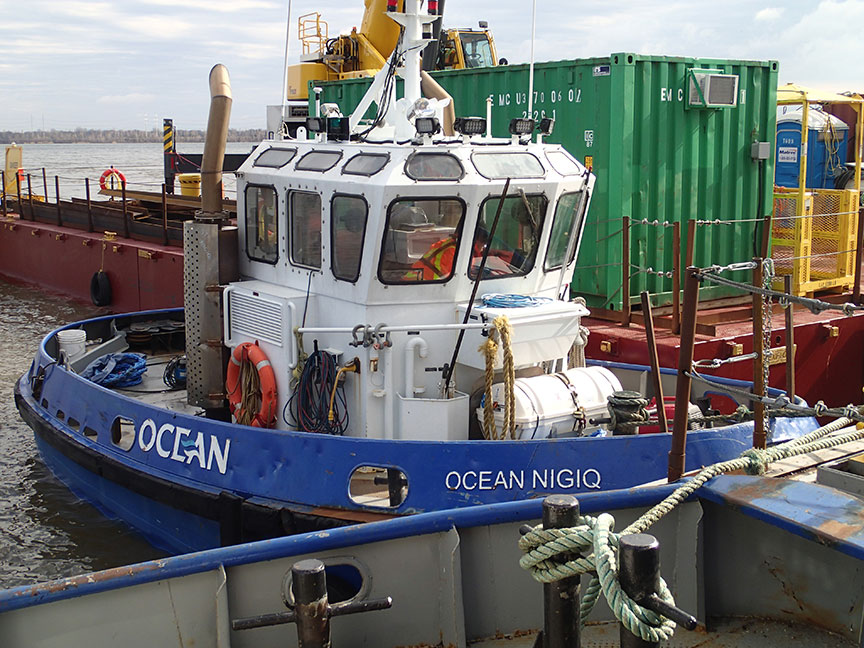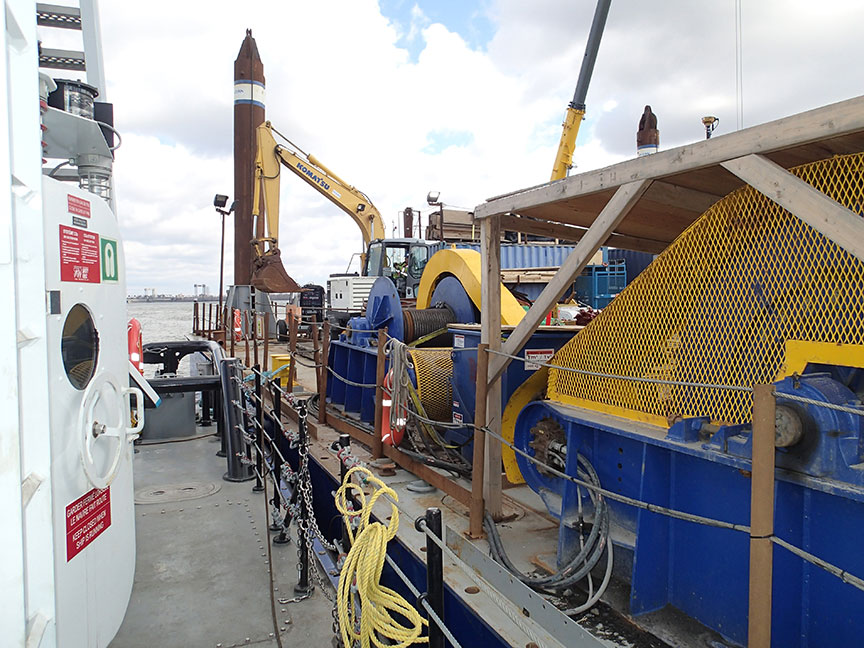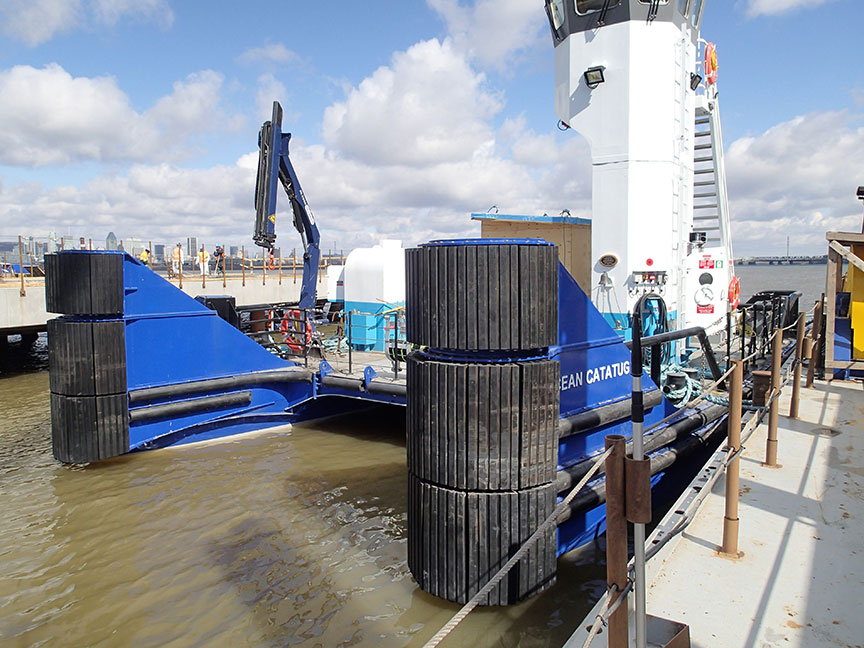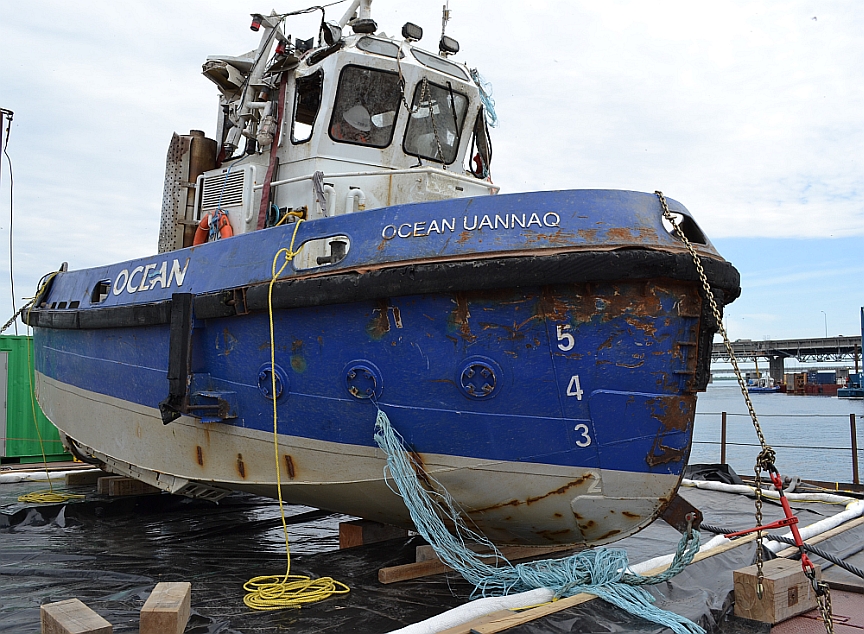Capsizing and sinking
Tug Ocean Uannaq
Champlain Bridge, St. Lawrence River, Montréal, Quebec
The occurrence
On 01 April 2016, the tug Ocean Uannaq, with two people on board, capsized and sank near the new Champlain Bridge on the St. Lawrence River off Montreal, Quebec. The tug was working with two other tugs to move a construction barge toward the shore. Both crew members were rescued. There were no injuries or pollution reported. The tug sustained major damage.
Media materials
Deployment notice
TSB launches an investigation into an occurrence involving the tug Ocean Uanaaq at the new Champlain Bridge construction site
Québec, Quebec, 12 April 2016 — The Transportation Safety Board of Canada (TSB) is launching an investigation into an occurrence involving the tug Ocean Uanaaq. The Ocean Uanaaq capsized and sank on 01 April near the new Champlain Bridge in Montréal, Quebec.
Investigation information
M16C0036
Capsizing and sinking
Tug Ocean Uannaq
Champlain Bridge, St. Lawrence River, Montréal, Quebec
Download high-resolution photos from the TSB Flickr page.
Class of investigation
This is a class 3 investigation. These investigations analyze a small number of safety issues, and may result in recommendations. Class 3 investigations are generally completed within 450 days. For more information, see the Policy on Occurrence Classification.
TSB investigation process
There are 3 phases to a TSB investigation
- Field phase: a team of investigators examines the occurrence site and wreckage, interviews witnesses and collects pertinent information.
- Examination and analysis phase: the TSB reviews pertinent records, tests components of the wreckage in the lab, determines the sequence of events and identifies safety deficiencies. When safety deficiencies are suspected or confirmed, the TSB advises the appropriate authority without waiting until publication of the final report.
- Report phase: a confidential draft report is approved by the Board and sent to persons and corporations who are directly concerned by the report. They then have the opportunity to dispute or correct information they believe to be incorrect. The Board considers all representations before approving the final report, which is subsequently released to the public.
For more information, see our Investigation process page.
The TSB is an independent agency that investigates air, marine, pipeline, and rail transportation occurrences. Its sole aim is the advancement of transportation safety. It is not the function of the Board to assign fault or determine civil or criminal liability.



